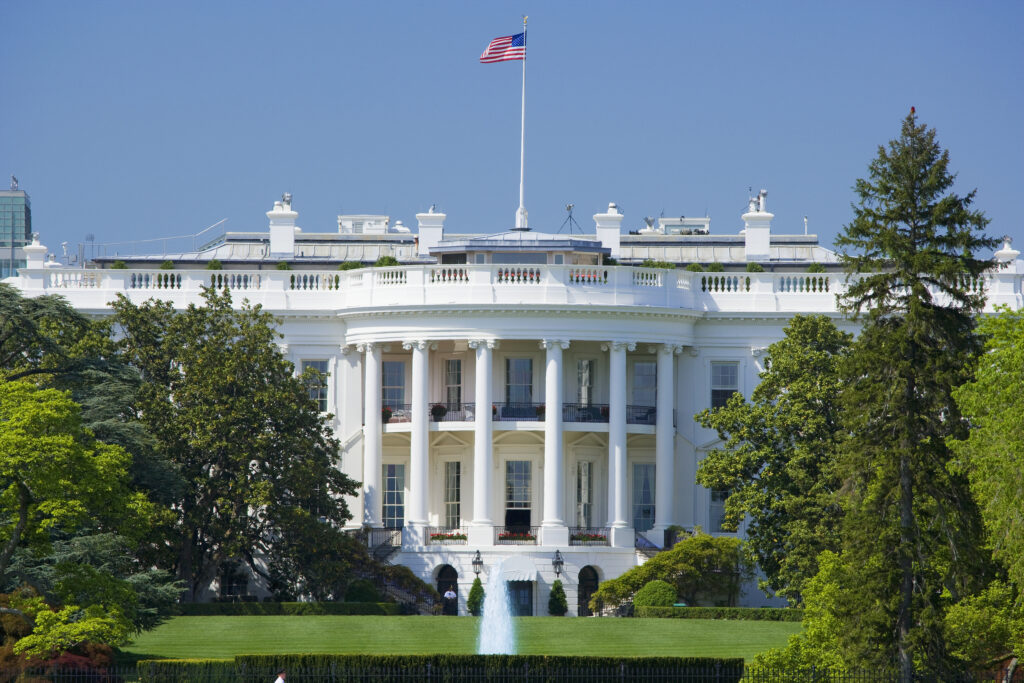
White House Focuses on Buildings to Enhance Climate Resilience, Reduce Climate Impacts
The White House Summit on Building Climate Resilient Communities brought together representatives from more than 25 states, territories and tribal nations to amplify the leadership of climate practitioners and highlight solutions that will reduce greenhouse gas emissions and better manage climate impacts.
On September 28, 2023, the White House hosted the first White House Summit on Building Climate Resilient Communities and released a National Climate Resilience Framework. In a separate announcement during the Greenbuild International Conference and Expo, the White House’s National Climate Advisor, Ali Zaidi, reported the launch of an effort to be led by the Department of Energy to develop a common definition for zero-emission buildings. Together, the announcements highlight the role of buildings in adapting to the impacts of climate change and mitigating the emissions that drive those impacts.

Building codes and standards sit squarely at the core of the solutions identified, and the International Code Council participated in activities surrounding both announcements.
Building Climate Resilient Communities
The White House Summit on Building Climate Resilient Communities brought together representatives from more than 25 states, territories and tribal nations to amplify the leadership of climate practitioners and highlight solutions that will reduce greenhouse gas emissions and better manage climate impacts.
The National Climate Resilience Framework provides a vision for a climate-resilient nation and how existing and new public and private sector activities can help achieve these goals.
In addition to existing investments in building improvements through the Inflation Reduction Act (IRA) and the Infrastructure Investment and Jobs Act (IIJA), the Summit and Framework announced new building-related initiatives, including:
- Promoting climate-resilient building and energy codes and standards. The Federal Emergency Management Agency’s (FEMA) Mitigation Framework Leadership Group, which works with federal agencies to advance hazard risk reduction across the nation, is issuing a set of Federal best practices for incorporating the latest consensus-based codes and above-code standards to achieve climate resilience and greenhouse gas reduction in physical assets that are funded with federal dollars. This publication is a product of the National Initiative to Advance Building Codes established in June 2022.
- The release of a report from the Wildland Fire Management and Mitigation Commission, established by IIJA, recommending improvements to Federal policies related to preventing, mitigating, suppressing and managing wildland fires, as well as rehabilitating affected lands. Some recommendations include funding support for developing fire-adapted communities, encouraging innovation in building and material design for ignition resistance, increased timelines for post-disaster code administration funding, and data capture and analytics to support building code development.
- Incorporating climate information into engineering and architectural standards and planning practice. Consensus-based engineering standards provide the basis for the design of the built environment, but many do not sufficiently address designing to future climate conditions and future climate-related loads (e.g., increased precipitation on roadways, increased energy demand during heat waves, changing geographical extent of extreme heat and cold). The Federal Government can support the development of climate-resilient standards by engaging in standards-development processes, partnering with architectural, engineering and planning professional associations, and providing the climate data and projections needed for standards development organizations to incorporate future climate considerations in engineering and architectural design standards that include nature-based features. The Global Resiliency Dialogue (led by the Code Council) developed Global Building Resilience Guidelines to set principles for the incorporation of future-focused climate data into codes and standards.
- Expand adoption of the latest consensus-based building and energy codes and high-performance standards. Adoption of the latest consensus-based building and energy codes and high-performance standards protects buildings, infrastructure, housing and people from climate risks. Government agencies can work with communities, standards development organizations, and code and trade organizations to prioritize existing funding and provide technical assistance to increase the adoption of these codes and standards across government and non-government-owned buildings. Governments can also partner with workforce networks, educational institutions, unions and associations to efficiently expand the training needed to implement building and energy codes and high-performance standards. Agencies should adopt these codes and high-performance standards for the construction or substantial rehabilitation of publicly funded or financed homes and buildings.
Zero-Emission Buildings Definition
Buildings remain a key area of focus for policymakers at the federal, state and local levels, investors and financial institutions, and corporations working on reducing greenhouse gas emissions. However, each of these stakeholders needs a clear definition of zero-emission buildings to quantify and report on the benefits received. Recognizing this need, the White House initiated the development of a common definition for buildings that significantly reduce their greenhouse gas emissions.

The U.S. Department of Energy will lead the definition development with a target completion date of January 2024. During the Greenbuild International Conference and Expo, the White House hosted an invite-only briefing to discuss the effort and receive feedback from stakeholders. Additional stakeholder feedback will be garnered over the coming months, but some core principles for a definition were presented. The initial draft definition focused on the importance of a highly energy-efficient building (based on meeting energy code requirements for new buildings), zero energy-related on-site emissions and the use of clean energy sources both on-site and off-site for any required. Additionally, the achievement of the requirements would require documentation and independent verification.
This initial definition will focus solely on operational energy use but could be expanded in the future to address embodied carbon, refrigerants, and other emissions-related items.
Next Steps
Both White House announcements will require considerable engagement from stakeholders to develop and implement effectively. The Code Council will continue to engage in these dialogues, focusing on the important role of building codes and standards in achieving shared goals and facilitating a consistent approach.
The International Code Council family of solutions is helping our communities forge a path forward on energy and sustainability to confront the impacts of a changing climate. Learn more here.








